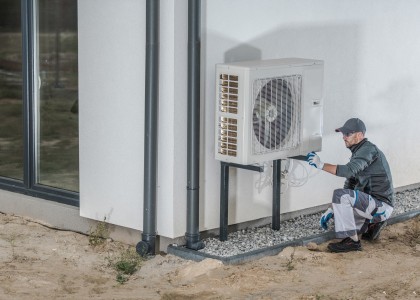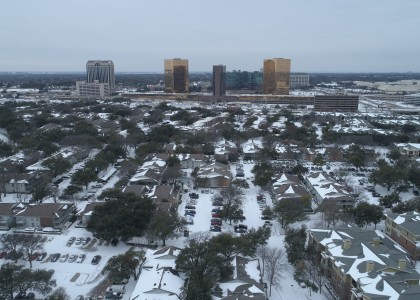The agency can dramatically slash climate and health-damaging pollution and reduce energy burdens for millions of families by ensuring a key Inflation Reduction Act financing program is structured to maximize its impact.
The Biden administration has an opportunity to supercharge an affordable and healthy housing future across the country this fall as it implements the Inflation Reduction Act. The Environmental Protection Agency—charged with administering the new Greenhouse Gas Reduction Fund (GHGRF) created by the law—can do so by requiring the financial institutions implementing the fund to prioritize residential rental property energy upgrade projects from initiatives like the Buildings Upgrade Prize (Buildings UP).[1] And it can ensure continued funding for new projects through the secondary mortgage markets supported by Fannie Mae and Freddie Mac.
The opportunity to both eliminate damaging pollution and reduce energy burdens is immense. Around 26 million low-income households (under 80% of the area median income) in the country burn fossil fuels to heat their homes. The average cost of a comprehensive, affordable housing retrofit—health and safety repairs, insulation and air sealing, wiring, and efficient electric appliances—can be $25,000–$30,000 per low-income household. The benefits of healthier and more comfortable homes are immense and far exceed that cost, but the vast majority of families—and even most rental property owners—don’t have the cash on hand to pay for comprehensive retrofits.
The Department of Energy’s Buildings UP is mobilizing community-based organizations, local governments, and other stakeholders to plan and implement equitable building retrofit programs in underserved communities across the nation. Buildings UP is intended to leverage the billions of dollars available through the bipartisan infrastructure law, the Inflation Reduction Act, utility rebate programs, and other funding sources to slash energy costs and climate pollution in existing buildings, including affordable housing, in nearly every state in the country.
Program implementers should first tap all available grants and incentives for low-income homes —like the Weatherization Assistance Program (WAP), home energy rebates, and utility programs—but that may not cover the full cost of comprehensive retrofits. For instance, WAP is limited to spending less than around $8,000 per home. That’s where the financing institutions selected by the GHGRF can step up. The EPA has the opportunity to ensure program implementers from Buildings UP, WAP, and other programs for low-income housing can receive zero-interest or low-interest loans, preferably forgivable loans, to bridge any gaps between the cost of comprehensive retrofits and the grants and incentives available for owners of affordable rental properties.
Another key opportunity for the GHGRF is recirculating capital, when appropriate, back to affordable housing retrofit programs through secondary mortgage markets, where loans are packaged into securities and sold to investors. Fannie Mae already offers financing products for energy efficiency, and Freddie Mac has single-family and multifamily financing options. Both have an obligation to prioritize underserved markets, just like the GHGRF. The EPA should select applicants for the GHGRF that will offer some products that are structured to reach the secondary markets. After selling their loans, GHGRF financing institutions will have new funding to finance additional rounds of retrofits.
The retrofit programs proposed for Buildings UP and similar initiatives are some of the greatest opportunities to deliver lower energy bills, climate pollution reductions, and healthier, more comfortable, and resilient housing for those who need it most. Choosing financial institutions to administer the GHGRF that can support those efforts and access the secondary mortgage markets will help put the country on track to meet the Biden administration’s goals of lowering household energy bills by retrofitting millions of homes through efficiency and electrification.
[1] ACEEE has been supporting Buildings UP through Residential Retrofits for Energy Equity (R2E2) to help overcome barriers to comprehensive retrofits for affordable housing.



